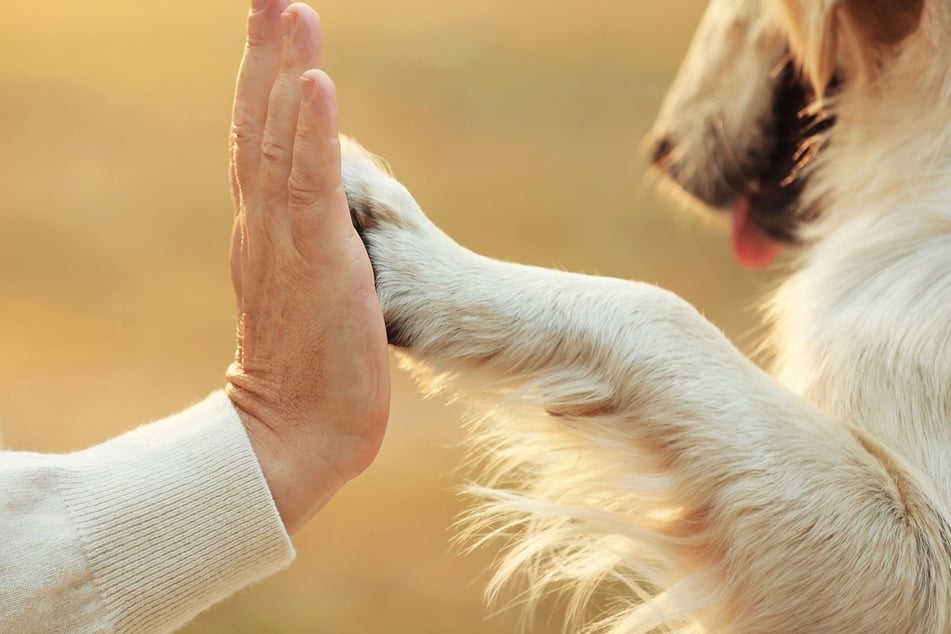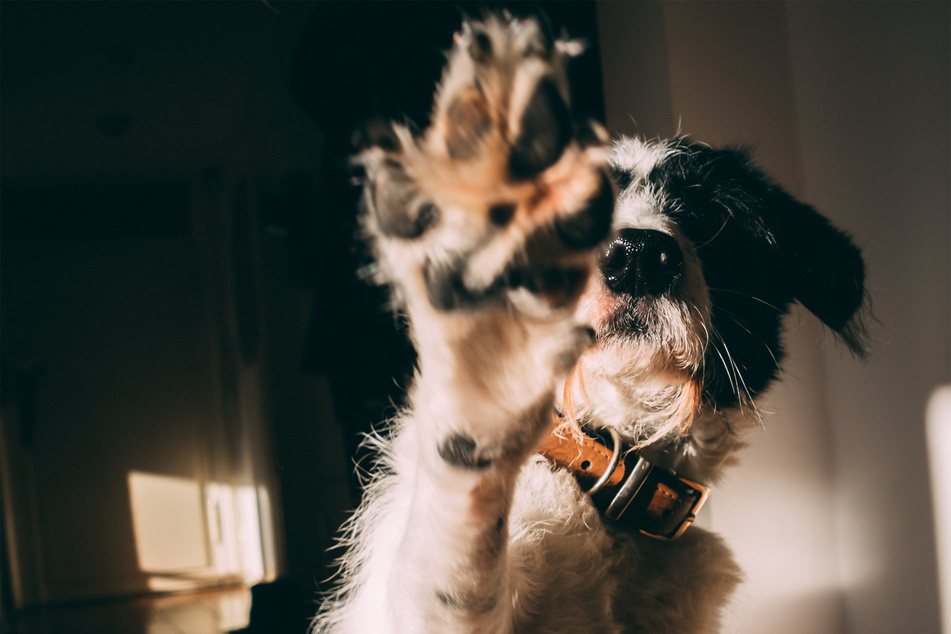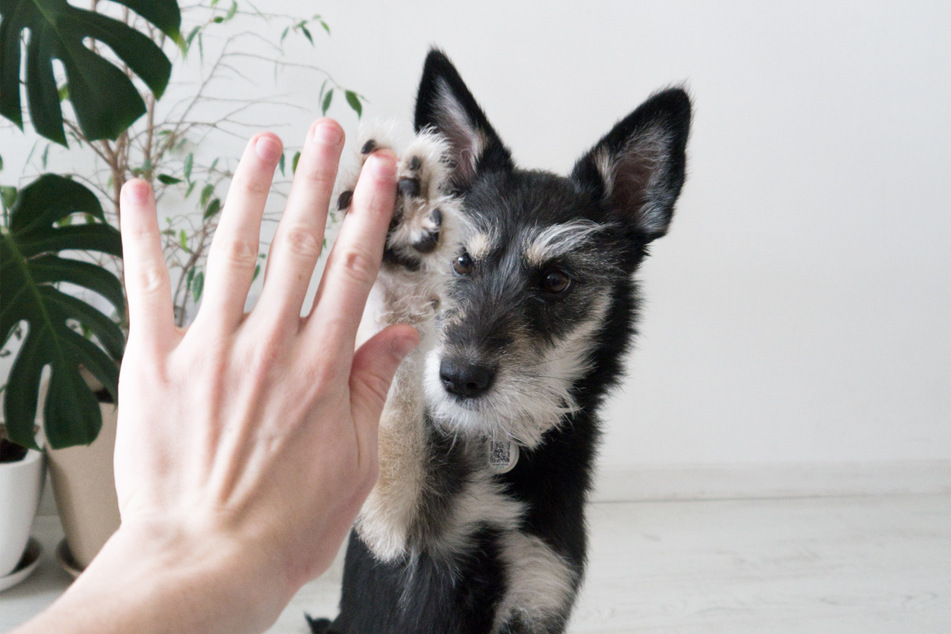How to teach a dog to high-five: Tips and tricks
If you've been wondering how to teach your dog to high-five you, then you've come to the right place. With a few easy tips and tricks, high-five training will become an absolute breeze.

Out of all the basic commands and behaviors you want to train in your dog from a young age, high fives may come low on the list. Still, this basic starter trick is something that'll bring a lot of joy to you, your kids, and your dog, creating a closer and more loving relationship that's well worth the effort required.
In this dog guide, TAG24 will take a look at how to teach a dog to high-five. What are the best tips and tricks to get your dog to high-five you, what are the benefits, and how long does it take? Let's take a look!
The benefits of high-five dog training
There's no real reason to high-five your dog except for the fun you'll get out of it. It's a strange thing to get into when training, and usually something you would teach as a trick rather than a super-necessary command like "sit" or "stop". High fives won't keep your dog safe, but they will keep your dog happy, and that's partially why they're worth teaching.
It's partially about challenging your dog as well and giving it something mentally stimulating to work on with you. Feel free to teach them plenty of words, get them agility trained, and of course, make sure that they are trained in the basics at a young age, these are all far more important things, but high fives are not without their benefits.
Here are the main advantages of teaching your dog to high-five:
- It's a trick that can be used to develop further and more complicated tricks like the handshake, or the pick-up
- This is possibly the most adorable greeting a dog could give to high-five your guests
- Lots of fun can be had, as well as admiration and trust, from teaching your dog to high five
- Helps strengthen your dog physically, improves paw-eye coordination
- Improved your personal bond with the dog
- Sense of shared achievement
It might seem like a minor, unimportant piece of training, but teaching a dog to high-five is well worth the time and effort!
How to teach a dog to high-five
Teaching a dog to high-five is one of the easier things to train and won't take too much effort. What you do need, though, is patience. As with any kind of dog training, it will take time and repetition to get your dog comfortable and even longer to make its training habitual and take away the treat reward.
Here's our five-step dog high-five guide
- Step 1: Place a treat in your closed fist, holding it out towards the dog and allowing the dog to smell it in your hand. Encourage your dog to try and get the treat, but keep your hand closed.
- Step 2: When the dog tries to open your hand with its paw, give it the reward and let it eat directly from your hand. Repeat this process a number of times over a long period (but don't overfeed your doggo).
- Step 3: Once the dog understands that it should put its paw on your hand to try and get the treat, start saying "high five" whenever it does. Continue to repeat this for a few weeks.
- Step 4: Now hold out your hand and repeat this procedure as normal but without a treat in your hand. Continue to react with "high five" and then reward the dog from your other hand.
- Step 5: Finally, hold out your hand but keep it completely flat, like you would for a high five. Use the command and get your dog to high-five you. Provide a reward if it reacts correctly. Continue this process, slowly weening your dog off the reward and turning the behavior into a habit.
The trick is simply having patience. Don't try to rush any of these steps, and instead allow yourself and your dog to take as many months as needed to learn the high five.

When to teach dogs to high-five
As with any training, it is best to start teaching your dog to high-five from an early age, at around 6–9 months old. It's not a physically challenging or difficult trick, and there's no risk of injury or harm. All that you need to be careful of is not overfeeding your gorgeous darling doggo.
It can be very easy to overfeed a puppy, mostly because they are ravenously hungry a lot of the time. Make sure that you take your time with the training, and instead of doing it three or four times in a row, practice the high five once a day and make it part of your routine.
How to make high-five training easier: Tips and tricks

Dog training should always be designed individually, keeping each dog's needs in mind as you move forward. As such, concentration on physical reactions and doggy body language is paramount to building a strong bond and, of course, efficient training. Of course, there are a number of things you can do to help with the process as well.
Here are some great tips and tricks to help teach your dog to high-five
- Tip 1: Start practicing new commands in a familiar and happy environment so that your furry friend can avoid distractions as much as possible.
- Tip 2: Make sure that the treats you use are actually liked by your doggo. It seems obvious, but it's actually an easy mistake to make.
- Tip 3: If you get your dog to sit beforehand, it will be easier for it to lift a paw. As a result, it will be more likely to engage with the activity if it is sitting down.
- Tip 4: When you are trying to ween your dog off the treats, use attention, cuddles, and pats as replacement rewards.
- Tip 5: Practice as regularly as possible, but not more than once or twice a day. Overeating can become problematic.
With a little bit of practice yourself, you can use similar training methods to also get your dog to shake your hand, sit, or develop other similar behaviors.
Dog high fives are similar to doggy handshakes
A high five and a handshake are different things, but those differences are rather subtle. It's worth keeping this in mind and considering your options when teaching your dog to high-five - should you perhaps combine high-five training with handshake training? It might be worth giving it a go!
The most important thing, of course, is not to confuse your dog too much. While it is perfectly okay to teach your dog to high-five and handshake at the same, it might be a good idea to get some professional advice before you begin. This is supposed to be a fun bonding exercise, after all, not a stressful and frustrating one.
Whatever decision you make, though, feel free to give dog high-five training a go. It can be a lot of fun, it isn't too difficult, and it'll improve the bond between you and your canine companion. What's not to love?
Cover photo: 123rf/serezniy




